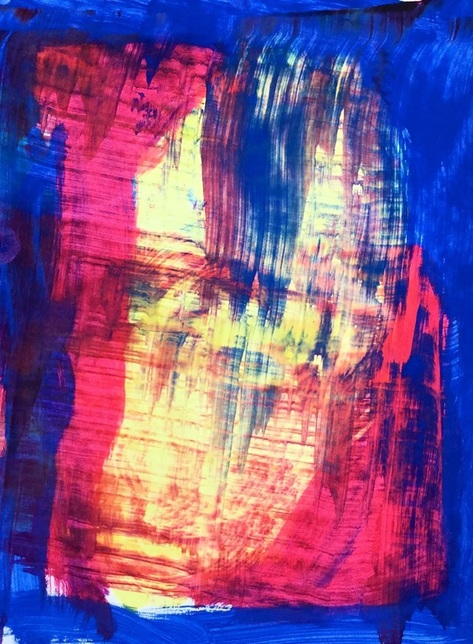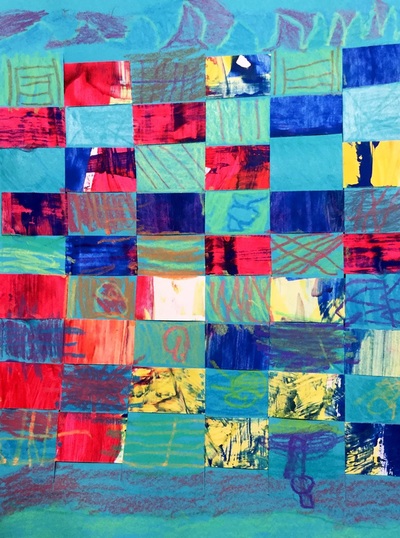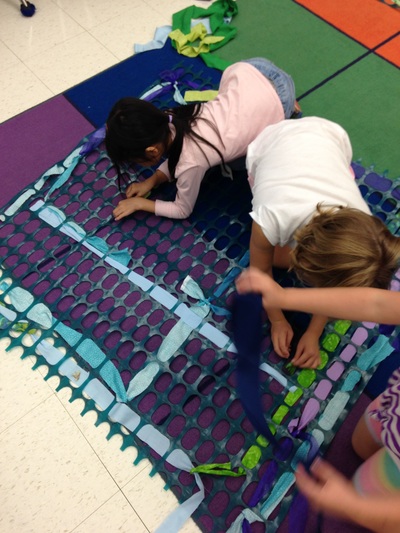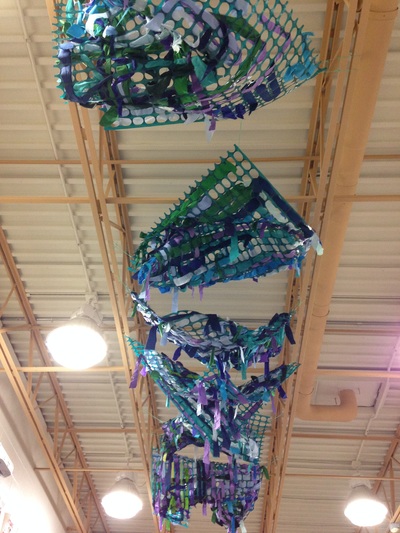|
Here is a project I do based on Gerhard Richter. Students create two paint-scraped paintings using the primary colors. When they scrape the paint, the colors mix and create secondaries. Afterwards, I cut up one of their paintings and they weave their two artworks together. Here's a write-up on a previous Richter project I did.
0 Comments
Gerhard Richter is a contemporary German artist who is well-known for his photorealistic paintings that he then blurs using a soft brush or squeegee. He is also famous for creating abstract paintings and then using a squeegee to scrape away paint. For this project, we painted two sheets of paper the primary colors. When painting, we had to work thickly and quickly with our paint so that it wouldn't dry. After students had covered their papers with the primary colors, they used a strip of tagboard to scrape away the paint on their paper. As they scraped, the primary colors would mix together and create the secondary colors. The kids thought this was the COOLEST THING EVERRRRR and I thought it was pretty cool too for re-learning our color mixing! As they scraped, they could also change the pressure to their scraping and it would create different effects on their paper. Each student made two paintings. One of the paintings they got to keep, the other painting I cut up into small strips that we then used in a weaving project. For the weaving project, each student got a sheet of paper that had slits cut into it. Students then practiced weaving their painted paper strips into it. Some students caught onto this right away while others struggled. I was really proud of the ones who got it and then helped teach it to their friends who were struggling with it. Throughout the weaving, we talked about patterns and how it is similar to ABAB patterns that they may have learned about in music.
On the final day, we used construction paper crayons to add a different pattern to each row of the weaving. I think next time I will have them just do one pattern on the entire weaving rather than a new pattern for each row. So this summer, I was lucky enough to receive a $300 grant from the Wisconsin Art Education Association/Handweavers Guild for a fibers project. I chose to do a snow-fence weaving with some fabric. I was intrigued by Janet Echelman's work. She is an American artist who was rejected from seven different art schools but never gave up. She painted for ten years before winning a grant to go to India to make art. While there, she made a large installation out of the local fisherman's nets. She then began to create large and larger works of art. They now are oftentimes seen in large, crowded areas. They are currently trying to get the finds to have one placed in Times Square right now, actually. The sculptures are really interesting because they are made out of a light netting that catches the breeze. So when the wind blows, it's almost as if you can see the wind as it ripples through the netting.
For the students, I bought blue, purple, and green fabrics. We talked about how these colors were called "cool" colors and that they had a calming effect on people's moods. Yes, I may be trying to do a little subliminal mood altering in m classroom! The kids worked on weaving into the snow fencing for three or four class periods. I asked them to start out weaving one direction and after they had finished, they could weave the other direction. Each class had 6 squares of fence that were 4x4 feet. After they finished, I have begun to install them in the classroom. I have been hanging them from the ceiling and twisting and turning them so that they create interesting forms, like Ms. Echelman's work. |
Devon CalvertHarmony and Consolidated Elementary Art Teacher in Milton, WI. UW-Eau Claire graduate. WAEA President. Apple Teacher. Archives
April 2018
Categories
All
|























 RSS Feed
RSS Feed
